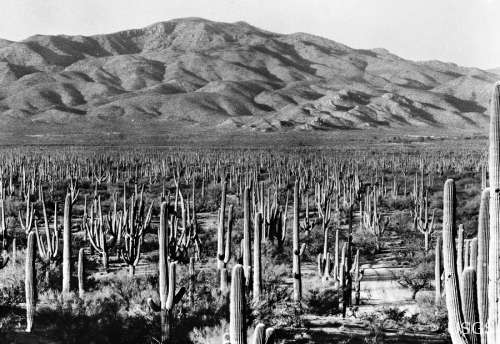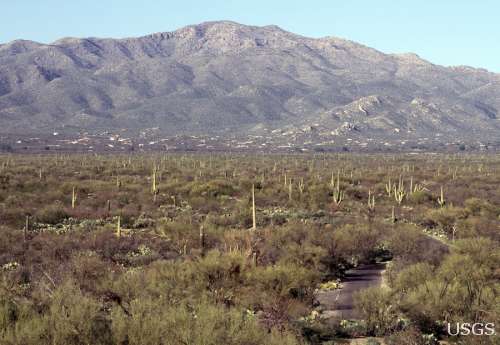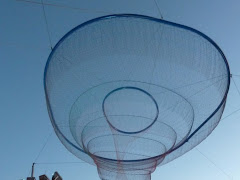saguaro
When you see the land covered by cacti: giant saguaros, stocky fish-hook barrels, sprawling prickly pears, thorny ocotillos, you see… pasture. At least when you are a 19th century rancher. It seems that for desperate owners of hungry cows anything greenish spells fodder. Never mind thorns that would make animal-rights activists cringe. And forget about damage to the environment; if saguaros begin to die as result of your grazing practices all you need is a convenient theory: they wither because of unseasonably cold winters and there is nothing one can do. The idea that cows trample young plants preventing cactus forest renewal cannot possibly be true.
You cannot really expect the people to tell the difference between correlation and causation. Especially not in cases when it would hurt them financially. It took almost 80 years for the federal government to acquire all grazing rights and establish a national park here. Giant saguaro are almost all gone, but the new ones are growing so this story has a happy ending. At least this chapter has.
When you see the land covered by cacti etc., you see… residential space. At least when you are a 21st century developer. Saguaros are once again in danger. This time from encroaching urban sprawl that turns everything into concrete wasteland. Which, differently then natural desert, is truly barren. No convenient theory necessary here, just widespread access to easy credit. And if your new house doesn’t have water, they’ll be happy to deliver it for you. Real estate bust is the only hope. House prices in Tucson continue to fall applying brakes to new construction. But reclaiming land from under abandoned housing tracts will take much longer then expelling cows. And it hasn’t started yet.
Prospectors see potential mines, seniors - place to winter in warm weather and luxury homes, ancient natives - source of fruit and game, tourists - web of road and trails, picnic sites and educational signs.
Wherever there is land - even as harsh and desolate as Saguaro National Park - it has to be put to use. Letting it be with no human interaction - either as benign as collecting saguaro fruit and hiking in the washes or as destructive as mining and grazing - is simply against human nature.


